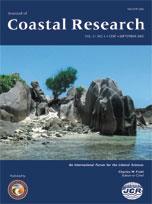To assess the possibility of restoring the original plant community of grey dune from a pine plantation, a synchronic study of the seed banks of three habitats, the grey dune, the pine plantation, and a clearing, was conducted at Quiberon (France). Five stations were selected: a Grey dune, Pine plantation 1, Pine plantation 2, Clearing 1, and Clearing 2. In contrast to the pine plantations, clearing 1, subject to heavy human disturbance, had a great similarity between its seed banks and its established vegetation. The larger clearing (C2) tend to resemble the grey dune, whereas the other was dominated by ruderal species.
The analysis of the seed banks demonstrated differences between the clearings and the pine plantations from which they were derived. The potential vegetation of the clearings was closer to that of the grey dune and had a larger number of species with a short life cycle than the pine plantations.
The seed banks of the pine plantations were not similar to that of the grey dune, but also differed from that of closed vegetation. This study suggested that it may not be possible to obtain a short term restoration of a grey dune after just clear felling only with the help of seed banks. On the other hand, seed dissemination could facilitate a restoration in a larger time scale as for clearings.





